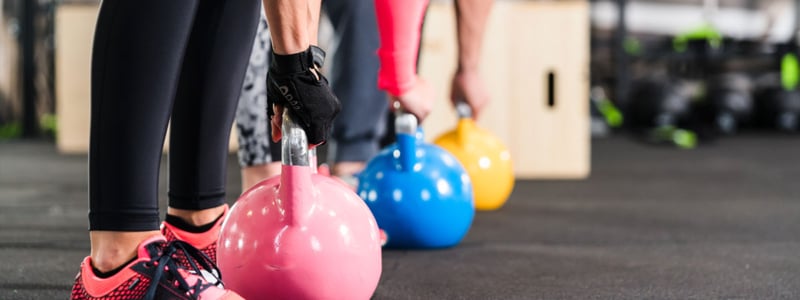Functional training is when you use your entire body to move in a way that mimics the activities you carry out every day. For example, when you push a heavy trolley, pick up a suitcase, squat to pick up something heavy, or play a sport like tennis. Simply put, a functional workout strengthens your body in a way that allows you to perform daily activities with ease and without any fear of injury – something that becomes even more important as we get older.
What does functional training look like?
A functional workout typically consists of compound exercises like squats, lunges, and deadlifts.
Compound exercises are moves that require more than one muscle group to work together, like when you do a squat, lunge or push-up. Instead of working one muscle in isolation, like many machines do, they challenge multiple muscle groups to complete the exercise. For example, a squat works your glutes, quads, adductors and core. For this reason, functional exercises are done with free weights such as kettlebells and dumbbells instead of machines.
Compound exercises are important as they mimic our natural movement patterns. We very rarely use one muscle in isolation. If you think about it – most movements we make, whether it’s leaning down to tie a shoe-lace or reaching up to grab something from a high shelf, work multiple muscles together.
When you train multiple muscle groups at the same time, you’re working to help your body move better as a whole. Additionally, you’re preventing straining one singular muscle and causing injury.
Functional training also improves coordination, focus, core strength and mobility.
Great functional exercises include squats, lunges, push-ups, dead-lifts and bent-over rows.
Does this mean I shouldn’t work any muscles in isolation?
If you’re healthy and generally looking to improve strength and fitness, the majority of your strength workouts should consist of functional and compound exercises. However, isolation exercises are very useful if you’re looking to strengthen a particular muscle group in order to address a weakness, support an injury, or improve stability in a certain joint. For example, a knee injury may require you to work on very specific muscles around the knee in order to support the joint.
If you’re interested in finding out more about functional training, or looking to learn the correct form of basic compound exercises, a personal trainer can be invaluable. Contact your local David Lloyd Club to enquire about personal training today.
Find a club



